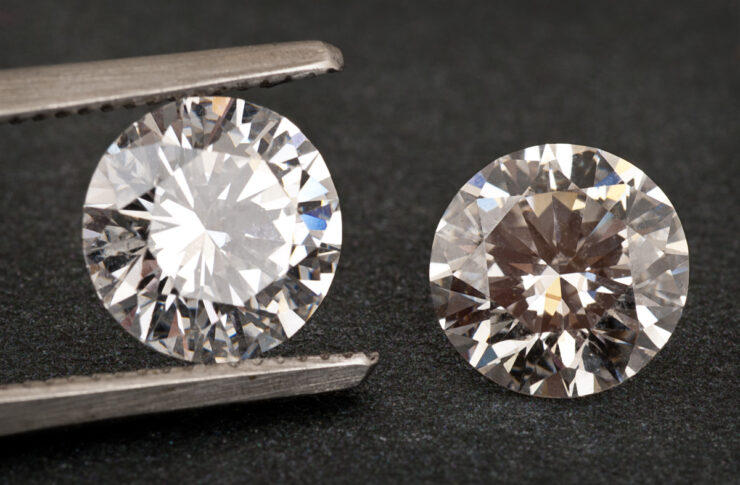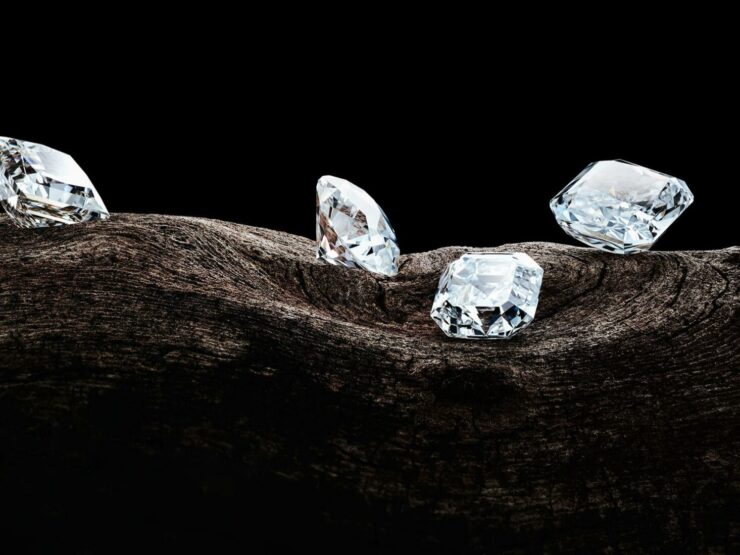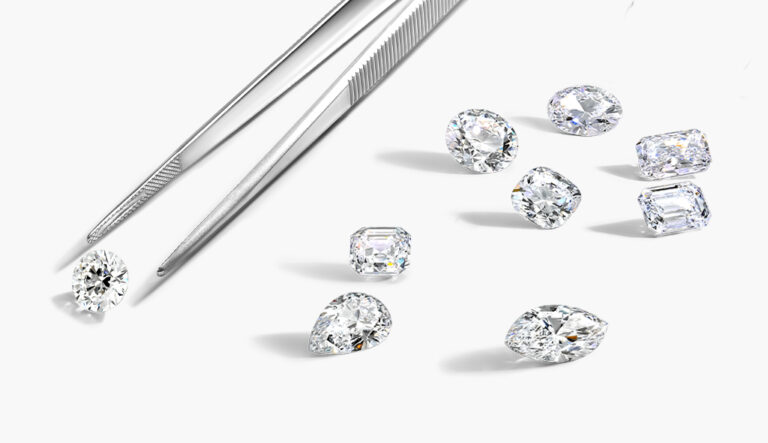Welcome to the pre-engagement ring study group! Prepare to travel into the fascinating world of lab-grown diamonds. These magnificent stones are changing the market for luxury jewelry as their appearance, durability, and shine are just like a natural diamond, hereby they are one of the most suitable and appropriate alternatives to Natural Diamonds.
If you’re curious about what makes Lab-Grown Diamond Engagement Ring unique then you are at the right place as we’ll go through the numerous benefits of lab-grown diamonds and will talk about their increasing social acceptance. Enter into the world of unmatchable brilliance of Lab Grown Diamonds and their jewelry!
What is Lab Grown Diamond?

Lab-Created Diamonds, also known as man-made diamonds, engineered diamonds, or cultured diamonds, are grown in tightly controlled laboratory environments using cutting-edge technological procedures that mimic the conditions under which diamonds naturally develop when they form in the mantle, beneath the Earth’s crust. These man-made diamonds are constructed from actual carbon atoms arranged in a diamond crystal structure. Since they are made of the same material as actual diamonds, they have similar chemical and visual properties.
Creation of Lab Diamond
In contrast to developed technology, which either uses high pressure and heat or a specific deposition technique called CVD to simulate the generation of natural diamonds, lab diamonds are produced from small carbon seeds under high pressure. The two processes used to make lab diamonds are CVD and HPHT.
The same formatting of trace features may not be the same in white lab diamonds as it is in fancy-colored lab diamonds. Only a cultivated device competent in catching minute deviations in trace components and crystal growth may distinguish a man-made diamond from a natural diamond.
History of Lab-Grown Diamond

The first lab-grown diamond made entirely of pure carbon atoms is found in 1797 by scientists. Thus, the race to create the first synthetic diamond began. Many people attempted to duplicate a lab diamond creation throughout the 19th century. Despite numerous claims of success, scientists were unable to reproduce these tests.
The first lab-grown diamond was produced in 1954 by GE as part of the “Superpressure” project. The project was initially launched in 1940, but because of World War 2, development was delayed. For many years, scientists experimented with different techniques and pressures to create diamonds from carbon. As a result, the scientists assumed they had succeeded when a substance destroyed their cutting instrument. They have a Mohs hardness rating of 10, and they can severely scratch and damage metal tools.
Rise of Lab-Grown Diamond

Lab Diamonds have gained popularity among every individual, as they have the most amazing elements. They exhibit the same brilliance, fire, and refraction just as mined ones.
- Durability
Lab-grown diamonds have the renowned Mohs hardness of 10. They are slightly less expensive than natural diamonds while still being just as durable. Because of their growing popularity, nothing can interfere with the brightness or dull the shine of lab-created diamonds, which truly last a lifetime. The view is that it is unimaginable to distinguish between a natural diamond and Lab Created Diamond.
- Affordability
Lab-grown diamonds are far less expensive than natural diamonds since the production process does not require several years, as it does for genuine diamonds. Given the high grade of the stones, they often retail for 30 to 40% less than mined or natural diamonds.
- Nature-Friendly Choice
You can learn that diamond mining can seriously harm the environment by doing a little investigation. As opposed to this, lab-grown diamonds are created in a controlled atmosphere with minimal to no environmental impact.
- Bring colors to yourself
When you are selecting lab diamonds, you will also get numerous color options to select from. Lab Diamonds are available in all possible colors ranging from red, pink, green, black, purple, orange, and many more.
The popularity of Lab-Created Diamond Among Celebs

Even famous people are not immune to the appeal of lab-created diamonds. American actor Leonardo DiCaprio was outraged to discover the hazardous working conditions and negative environmental effects of manufacturing mined diamonds while filming for the 2006 film “Blood Diamond.” He soon began using lab-grown diamonds. Not just Leonardo DiCaprio but other famous people have come to appreciate the worth and allure of cultivated diamonds. Other stars also started donning them, such as Penélope Cruz, Emma Watson, Zoë Kravitz, Lady Gaga, and many more…
Conclusion
Buying lab-grown diamonds is always a wise decision because there are so many reasons and evidence to support it. Lab-created diamonds are an investment that every jewelry lover should make because they are affordable and a stone that is barren of guilt and unethical practices.
Gemver is one of the best-sellers providing Lab Grown Diamonds at the most suitable price having higher quality, durability, and shine. A piece of lab diamond jewelry can be a great gift for yourself or someone you love. Lab Grown Diamonds are admiringly versatile and can be worn as day-to-day jewelry or for special occasions too.
